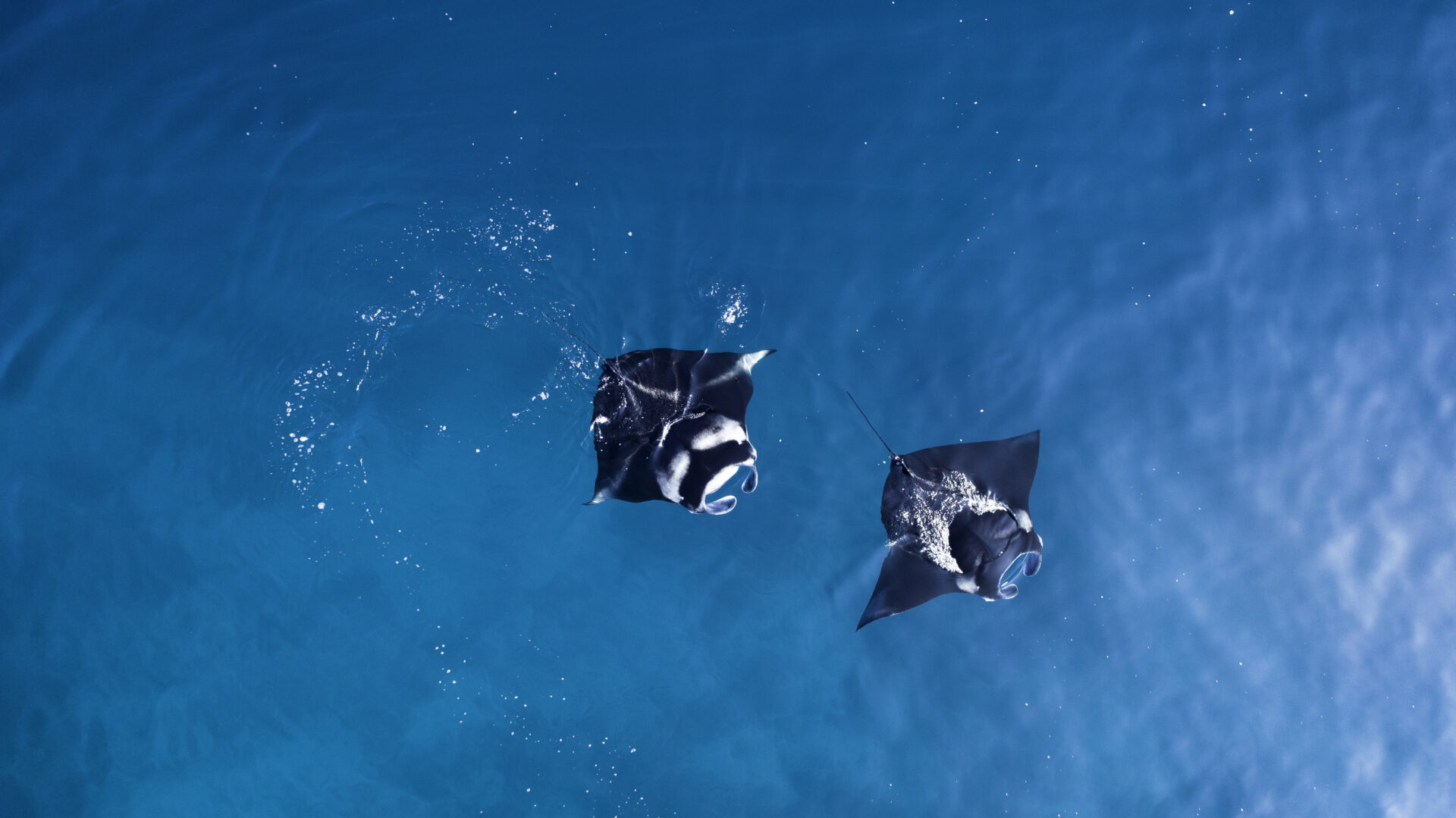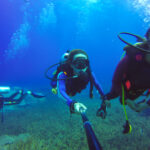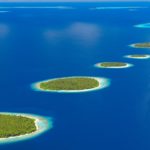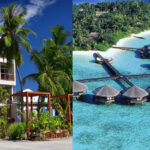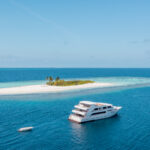Diving in Maldives is an incredible way to see an entirely different world, and it’s one of those skills I think every traveler should have in their back pocket — if they’re comfortable diving deep below the surface of the sea, that is. There’s an incredible sense of calm that washes over you once you’re floating at least 10 feet down, seeing environments and wildlife that your land-loving friends will never know. I call it Yoga under the sea. Plus, diving is a great activity for travelers who enjoy more active vacations, rather than relaxing in a lounge chair by the pool all day.
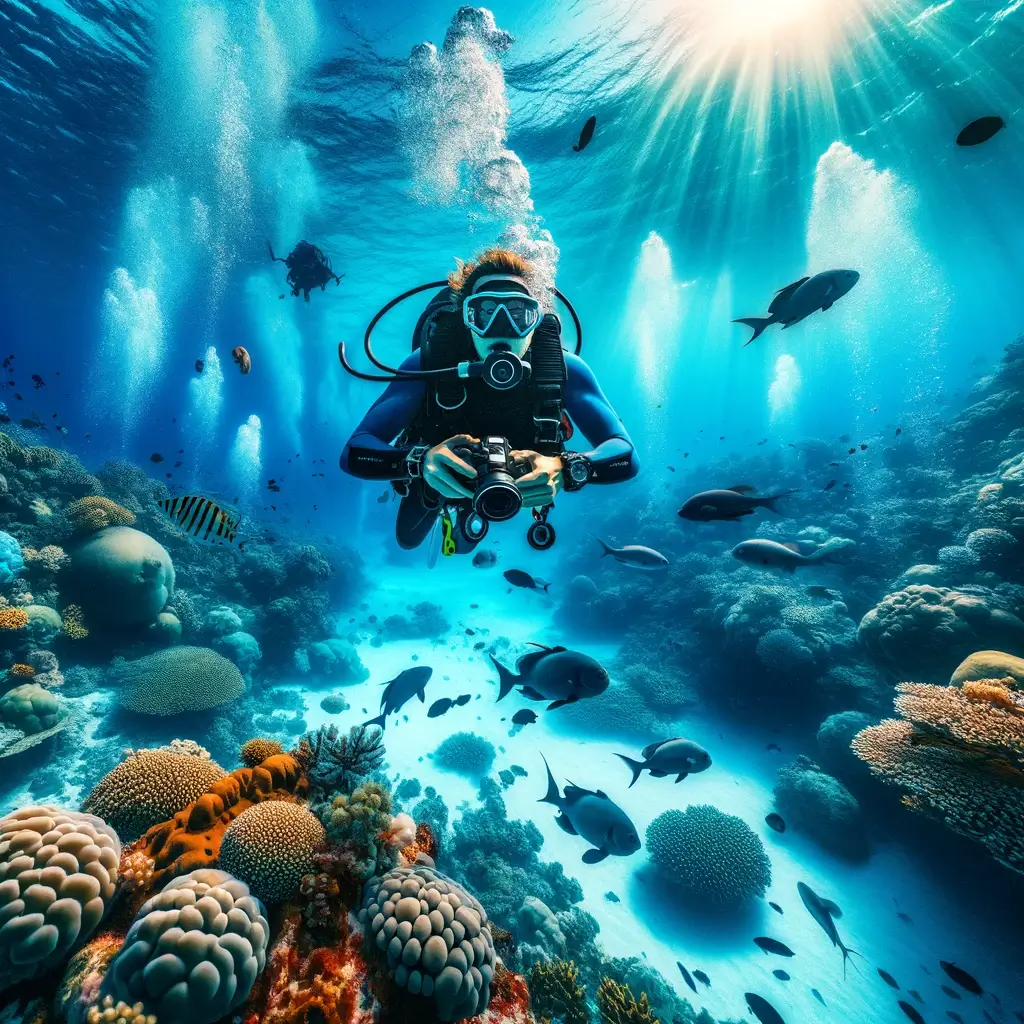
The Maldives has a tropical climate, with warm water temperatures (80-86°F) year-round, making diving possible anytime. However, the best time for a scuba trip is January to April, with dry and warm weather, and optimal visibility. May to July can be unsettled, with reduced visibility, while August to November is ideal for spotting large sea creatures like manta rays and whale sharks, due to increased plankton from the southwest monsoon. December can be windy and rainy, potentially affecting visibility. Plan your dive trip accordingly to make the most of your underwater experience in the Maldives.
Dive Environments
The Maldives offers diverse dive environments for all skill levels. Explore reef dives, drift dives, and wreck dives, featuring rock pinnacles, underwater structures, and artificial reefs. Channels between atolls offer strong currents, perfect for drift dives, which attract larger marine life. Lagoon environments are shallow and protected, ideal for practice dives and classes. With vibrant marine life and stunning coral reefs, the Maldives is a must-visit destination for divers. Discover the thrill of diving in this tropical paradise, with opportunities for all levels, from beginner to experienced divers.
The Maldives offers a variety of diverse dive environments, including:
- Reef dives: Explore the vibrant coral reefs and marine life of the Maldives.
- Drift dives: Experience the thrill of diving in the strong currents of the Maldives’ channels.
- Wreck dives: Discover the artificial reefs that have formed around sunken structures.
- Thila dives: Dive around rock pinnacles and underwater structures like caverns, overhangs, and swim-throughs.
- Lagoon dives: Enjoy a relaxing dive in the shallow, protected waters of the Maldives’ lagoons.
Diving in Maldives for All
Whether you’re a beginner or an experienced diver, the Maldives has something for everyone. With its calm and clear waters, the Maldives is an ideal destination for:
Beginner Divers
For those new to diving, the Maldives offers a range of beginner-friendly dive sites and courses. The calm and clear waters make it an ideal location for learning the basics of diving. Many dive resorts and centers offer discovery dives, which allow you to try diving for the first time under the supervision of a certified instructor. These dives are usually conducted in shallow waters, where you can get comfortable with the equipment and the underwater environment.
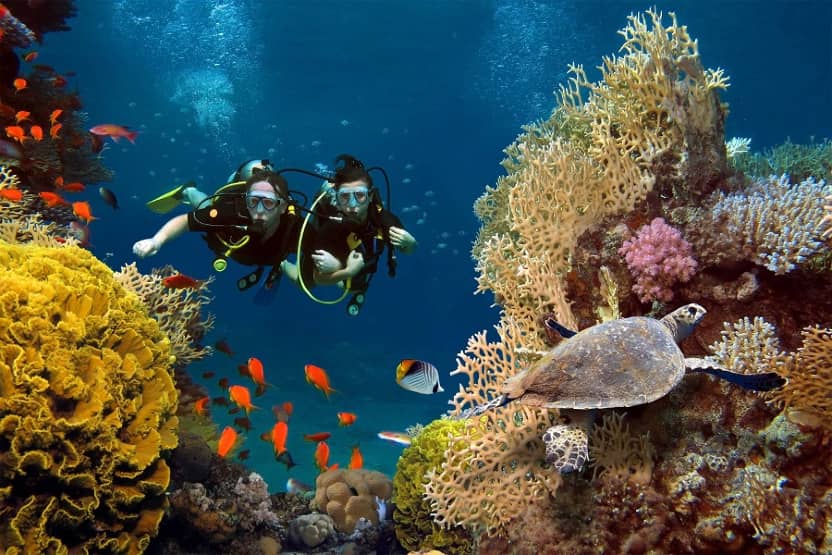
Once you’ve tried diving and loved it, you can enroll in an Open Water Diver course, which is the first level of certification. This course teaches you the fundamentals of diving, including safety procedures, equipment usage, and underwater communication. The course typically includes both theoretical and practical sessions, and upon completion, you’ll be certified to dive up to 18 meters.
Experienced Divers
For experienced divers, the Maldives offers a range of challenging and exciting dive sites. The strong currents and deep waters make it an ideal location for drift dives, wall dives, and wreck dives. The Maldives is home to many dive sites that are known for their strong currents, which attract larger marine life like sharks, tuna, and mantas.
One of the most popular dive sites for experienced divers is the HP Reef, which is known for its strong currents and abundant marine life. The reef is home to many species of fish, including groupers, snappers, and eagle rays. Another popular site is the Banana Reef, which is known for its vibrant coral and diverse marine life.
Specialty Divers
The Maldives also offers a range of specialty courses for divers who want to expand their skills and knowledge. Some of the most popular specialty courses include:
- Wreck Diving: This course teaches you how to dive safely and responsibly on wreck sites.
- Night Diving: This course teaches you how to navigate and communicate underwater at night.
- Underwater Photography: This course teaches you how to take stunning underwater photos.
- Deep Diving: This course teaches you how to dive safely and responsibly at depths beyond 18 meters.
Liveaboard Diving
For those who want to explore the Maldives’ dive sites in depth, liveaboard diving is a great option. Liveaboard boats offer a range of itineraries, from short 3-day trips to longer 7-day trips. These boats usually have experienced crew and guides who will take you to the best dive sites and provide you with a safe and enjoyable diving experience.
Favorite Dive Spots
The Maldives is home to some of the most popular dive spots in the world. Here are some of the best atolls to dive in the Maldives:
- Ari Atoll: Known for its clear waters, this atoll is home to Maaya Thila, a dive site that consistently ranks as one of the best in the area.
- Baa Atoll: This atoll is a UNESCO Biosphere Reserve with dive sites for both beginners and advanced divers.
- Fuvahmulah Atoll: This atoll is known for the rare shark species that frequent the area, including tiger sharks, thresher sharks, whale sharks and hammerheads.
- Male Atoll: The Male Atoll is divided into two sections: the North Male Atoll and the South Male Atoll. The North Male Atoll is one of the most visited dive areas in the country, while the South Male Atoll tends to be slightly less trafficked.
- Vaavu Atoll: The Vaavu Atoll offers excellent channel diving for divers of all levels. One of the most notable sites in the atoll is Fotteyo Kandu, a channel with a number of large overhangs and caves.
- Lhaviyani Atoll: Around Kuredu Island there are two sites, Kuredu Express and Shipyard. Kuredu Express is an intense drift dive, and Shipyard is home to two wrecks.
- Rasdhoo Atoll: Hammerhead Point is just off Madivaru. This is a bluewater dive, so you’ll need good buoyancy.
- Baa Atoll: Hanifaru Bay is a feeding ground for manta rays and is one of the few places in the world where you can see so many in one place.
Here are some of the favourite dive spots, along with a focus on marine life and the best time to dive:
1. Banana Reef
- Marine Life: Manta rays, whale sharks, eagle rays, and a variety of fish species
- Best Time to Dive: May to October
Banana Reef is a popular dive spot known for its vibrant marine life. The reef is shaped like a banana, hence the name, and is home to a variety of fish species, including manta rays, whale sharks, and eagle rays.
2. Maaya Thila
- Marine Life: Grey reef sharks, white tip reef sharks, and a variety of fish species
- Best Time to Dive: May to October
Maaya Thila is a submerged pinnacle located in the middle of the atoll. The dive spot is known for its strong currents, which attract a variety of marine life, including grey reef sharks and white tip reef sharks.
3. Nassimo Thila
- Marine Life: Manta rays, whale sharks, and a variety of fish species
- Best Time to Dive: May to October
Nassimo Thila is a submerged pinnacle located in the southern part of the atoll. The dive spot is known for its vibrant marine life, including manta rays and whale sharks.
4. Kandooma Thila
- Marine Life: Grey reef sharks, white tip reef sharks, and a variety of fish species
- Best Time to Dive: May to October
Kandooma Thila is a submerged pinnacle located in the middle of the atoll. The dive spot is known for its strong currents, which attract a variety of marine life, including grey reef sharks and white tip reef sharks.
5. Rainbow Reef
- Marine Life: A variety of fish species, including parrotfish, butterflyfish, and angelfish
- Best Time to Dive: May to October
Rainbow Reef is a coral reef located in the northern part of the atoll. The dive spot is known for its vibrant marine life, including a variety of fish species, and its colorful coral.
6. Cocoa Thila
- Marine Life: Manta rays, whale sharks, and a variety of fish species
- Best Time to Dive: May to October
Cocoa Thila is a submerged pinnacle located in the southern part of the atoll. The dive spot is known for its vibrant marine life, including manta rays and whale sharks.
7. Alimatha Jetty
- Marine Life: A variety of fish species, including groupers, snappers, and rays
- Best Time to Dive: May to October
Alimatha Jetty is a popular dive spot located in the eastern part of the atoll. The dive spot is known for its vibrant marine life, including a variety of fish species, and its colorful coral.
8. Manta Point
- Marine Life: Manta rays and a variety of fish species
- Best Time to Dive: May to October
Manta Point is a popular dive spot located in the southern part of the atoll. The dive spot is known for its vibrant marine life, including manta rays and a variety of fish species.
9. Kuda Giri Wreck
- Marine Life: A variety of fish species, including groupers, snappers, and rays
- Best Time to Dive: May to October
Kuda Giri Wreck is a popular dive spot located in the eastern part of the atoll. The dive spot is known for its vibrant marine life, including a variety of fish species, and its colorful coral.
10. Victory Wreck
- Marine Life: A variety of fish species, including groupers, snappers, and rays
- Best Time to Dive: May to October
Victory Wreck is a popular dive spot located in the eastern part of the atoll. The dive spot is known for its vibrant marine life, including a variety of fish species, and its colorful coral.
Dive Operators
The Maldives is home to numerous dive operators, offering a range of diving services, including:
- Dive resorts: Stay and dive with one of the many resorts in the Maldives.
- Liveaboards: Explore the Maldives’ dive sites on a liveaboard boat.
- Dive centers: Take a day trip or complete a diving course with a local dive center.
Safety
The Maldives takes diving safety seriously, with strict safety regulations in place to ensure a safe and enjoyable diving experience. All dive operators are required to follow safety guidelines, and divers are encouraged to dive within their comfort level and experience.
Some of the safety measures in place include:
- Mandatory safety briefings before each dive
- Dive computers and depth gauges to monitor dive times and depths
- Safety stops at 5 meters for 3-5 minutes to avoid decompression sickness
- Emergency oxygen and first aid kits on board
- Regular maintenance and inspection of diving equipment
- Trained and experienced dive guides and instructors
- Dive insurance available for all divers
Additionally, the Maldives has hyperbaric chambers, which provide medical treatment for diving-related injuries. The Maldives also has a robust search and rescue system in place, with emergency services available 24/7.

